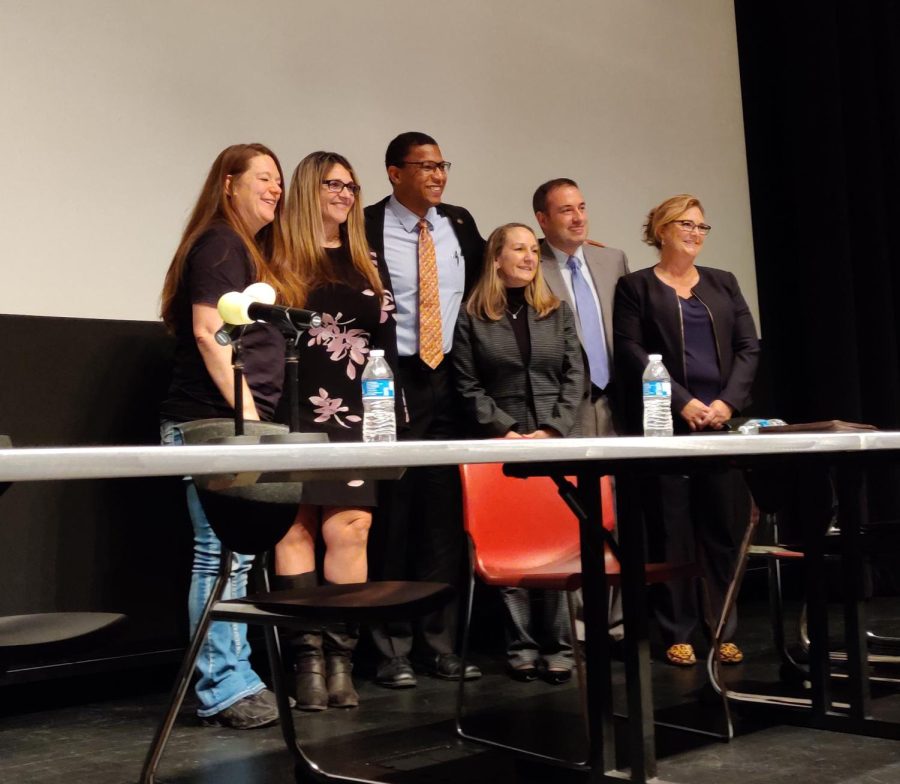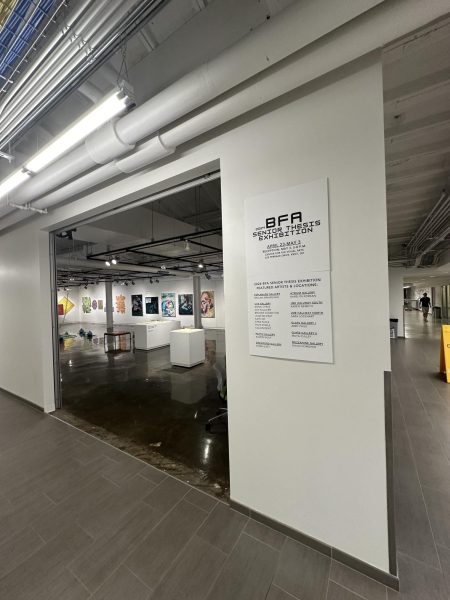Human trafficking: who is really targeted?
The panel that spoke on human trafficking. From left to right: Angel Dague, Sheri Bevan Walsh, Jean-Phillipe Rigaud, Carol O’Brien, James Mackey, Anne Marie O’Brien. Jan. 25, 2020.
January 30, 2020
Rumors spread around social media about victims being stalked through Walmart, or reading a note placed on their windshield just before they’re abducted, are rarely the case when it comes to human trafficking.
“Most human traffickers actually have a grooming process and know the person,” said Tricia Knoles, the public information officer for Kent State University PD.
Ohio has the 4th highest rate of reported human trafficking cases in the country. With the number of reported cases being so high, it is important for people to recognize the signs that someone could be a victim of this crisis.
When Melissa Riley, the Cuyahoga County assistant prosecutor, spoke at the “Human Trafficking – It Happens Here Too!” event, she shared information on a range of profiles of human trafficking victims.
“In the majority of the cases that I’ve prosecuted, it has been a female who’s been a victim, and generally the male who is the pimp,” Riley said.
While there are cases where the male is the victim, and the female the abuser, it typically happens the other way around. Their ages can range from teens as young as twelve to women as old as their 60s . These people also come from a wide range of ethnic and socio-economic backgrounds.
The use of social media has become one of the predator’s most effective tools in reaching out to new victims. When asked how often social media is linked to cases of sexual violence or human trafficking, Riley responded that it is extremely common.
Not only are predators reaching out to victims via social media, but current victims are sometimes required to make posts showing off stacks of cash, while bragging about how much money they are making, in hopes to recruit the victims circle of friends.
“They are selling this glam lifestyle.” Riley said.
One social media app, Sugar Baby, is used for seeking arrangement in exchange for money. These arrangements could consist of just going out to dinner or a movie, or lead to physical interactions.
Sergeant James Mackey, of the Cuyahoga County Sheriff Department, said that activity on apps like Sugar Baby are gateways into trafficking, and should be avoided.
One of the biggest contributors to the expansion of human trafficking is the opiate crisis in Ohio. The victim’s addiction is exploited by the abuser, whom in many cases is supplying them with the drug. In some cases, the addict is the one offering to sell off members of their own family for the drug.
“I’ve had people who have told me that when they get dope sick, they’d sell their mother, they’d sell their children, they’d sell whoever to get that next fix,” Riley said.
Special Agent Jean-Phillipe Rigaud was also among the panel of speakers at this event. Rigaud is an agent on the Mahoning Valley Human Trafficking Task Force and spoke about his experience interviewing victims of human trafficking.
“Many times, the victims I’m talking to don’t have much of a family, at least not a family that is able to, or willing to provide them the backing support.” Rigaud said. “Many times, they feel they’ve let their family down.”
Isolation, either caused from this crisis or from other influences, is one of the strongest vulnerabilities predators exploit in order to lure their victim in, and keep the victim coming back to work.
Rigaud also mentioned that many victims of human trafficking do not identify themselves as victims.
“The behaviors that we see and responses to what maybe a normal person traumatized would have maybe said, is not congruent,” Rigaud said. “What they’ve experienced, what they’re talking about doesn’t fit the emotions you’re seeing.”
Griffin White is a safety and transportation reporter. Contact him at [email protected]























